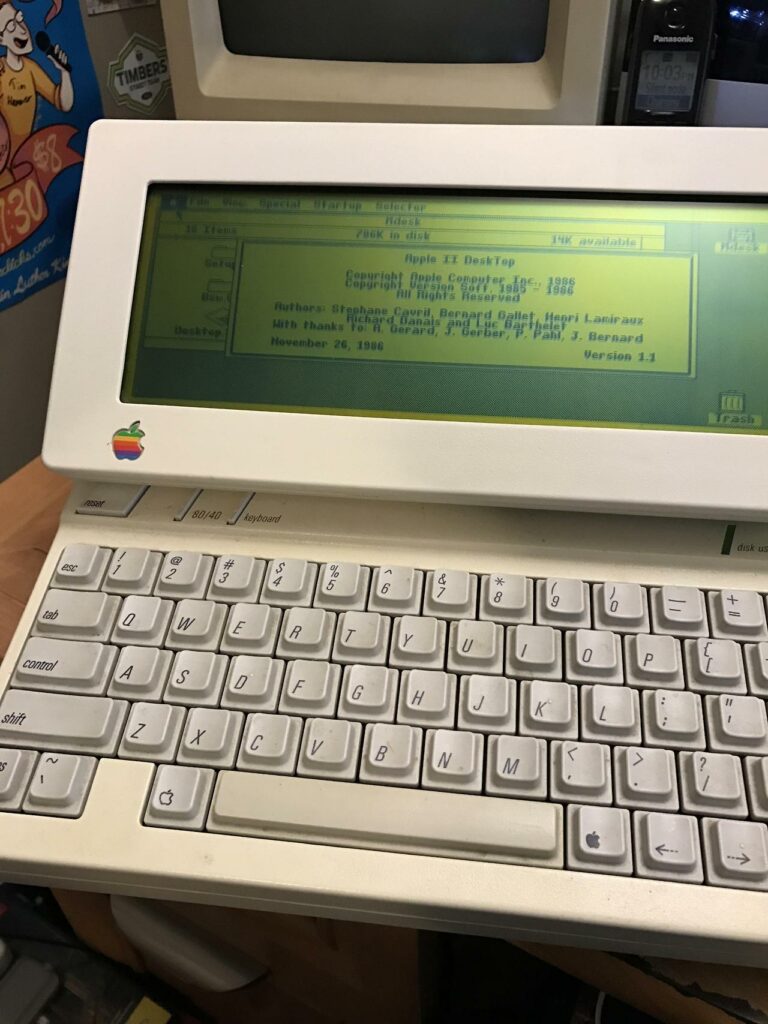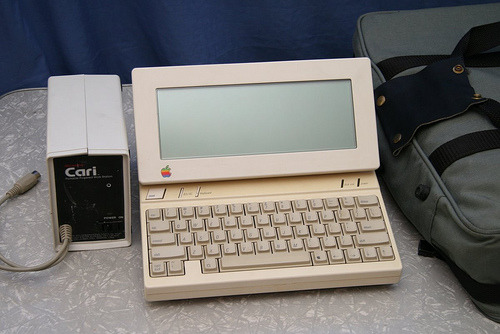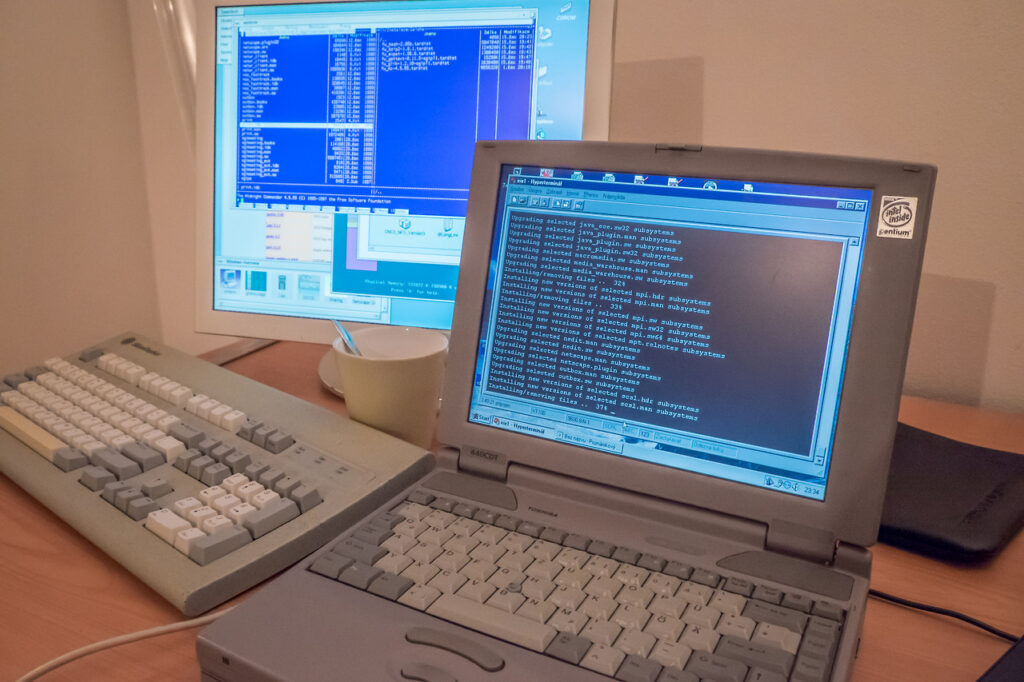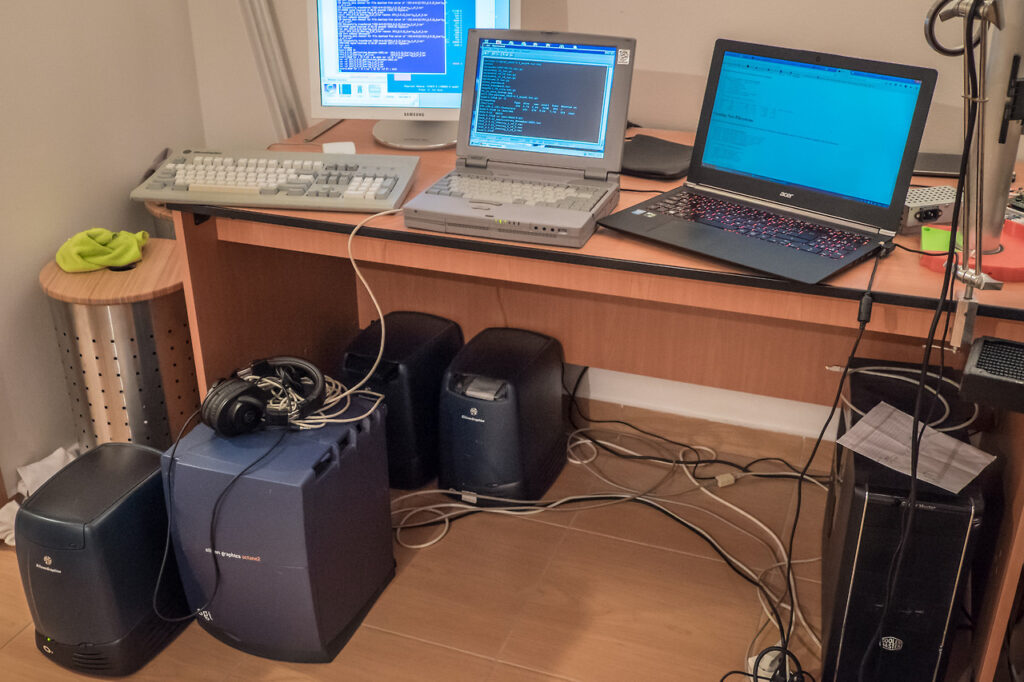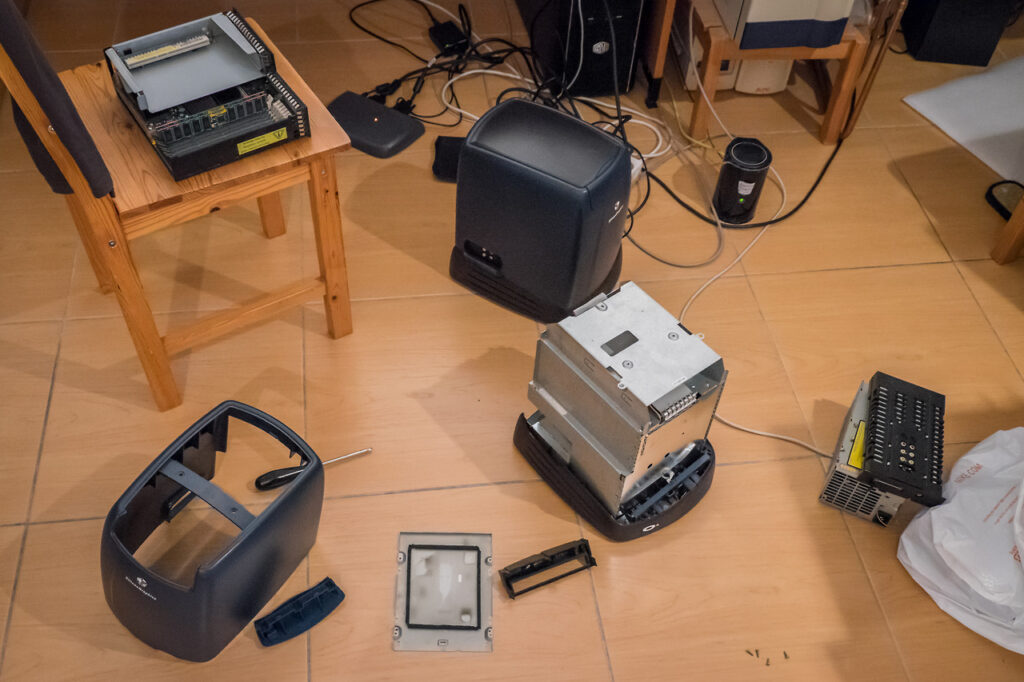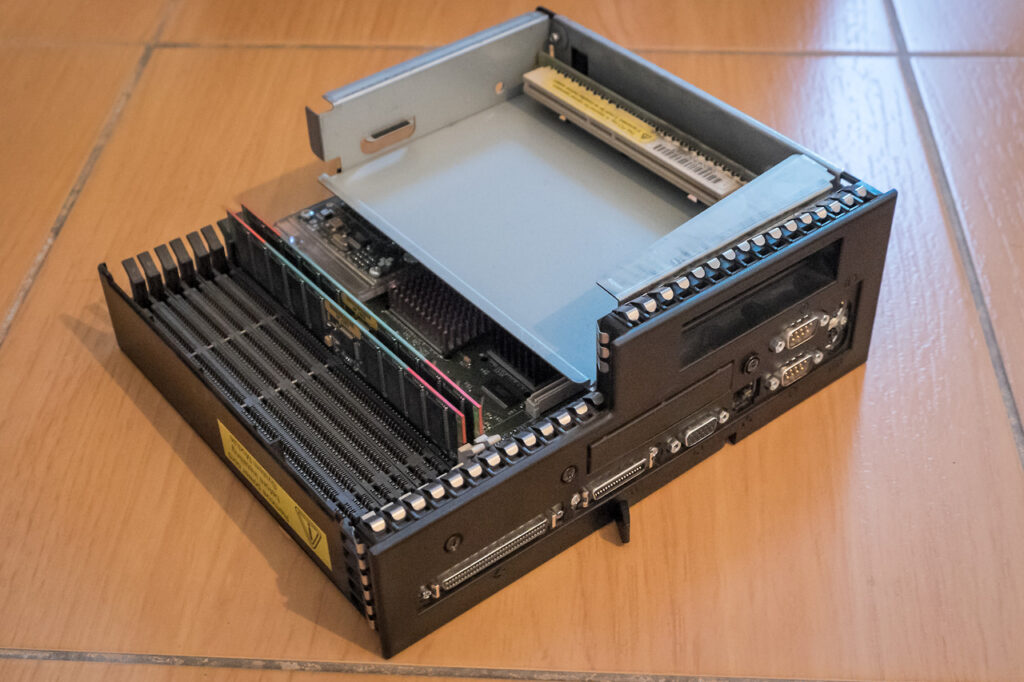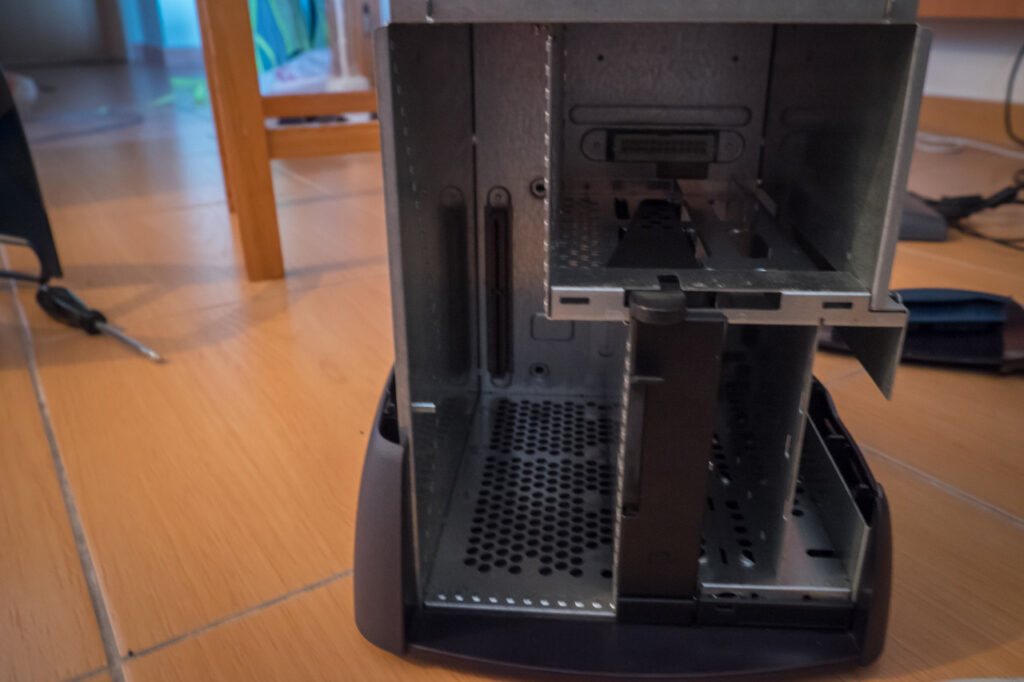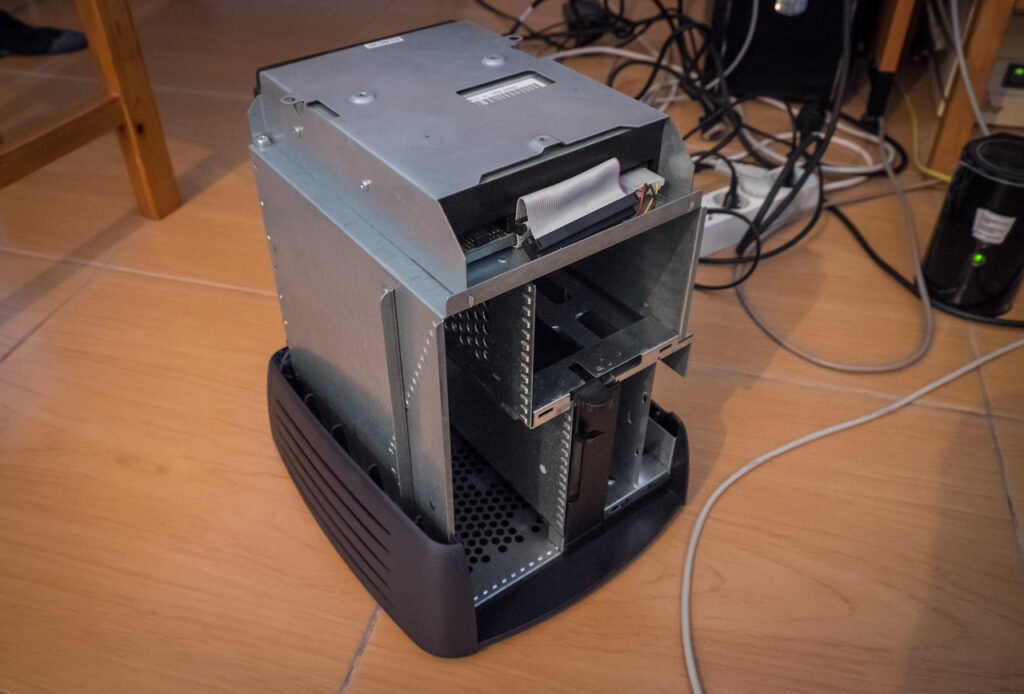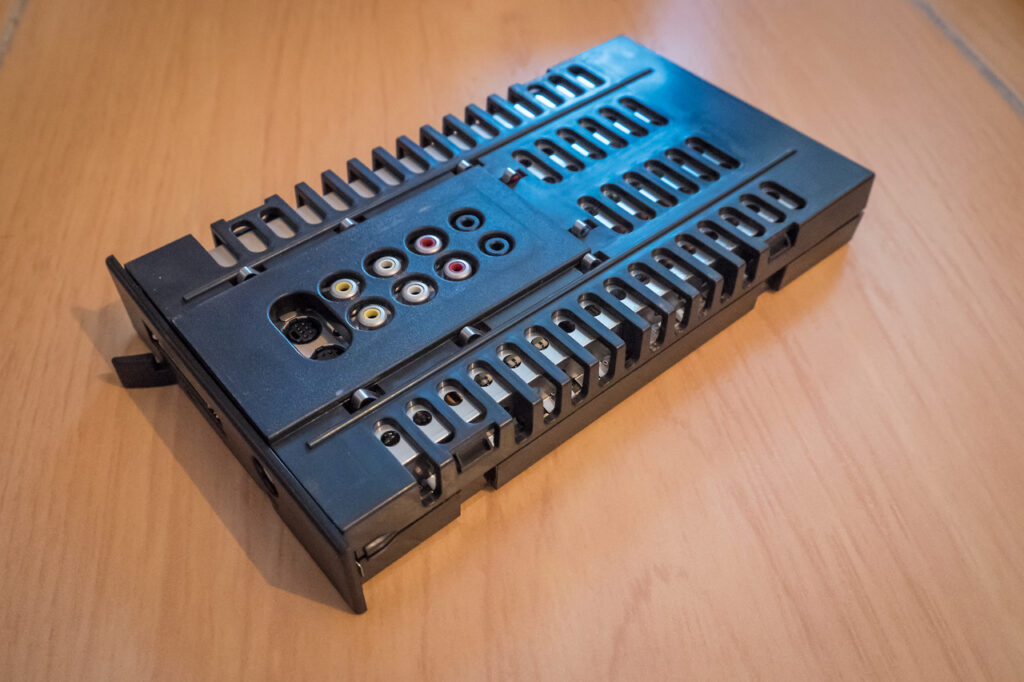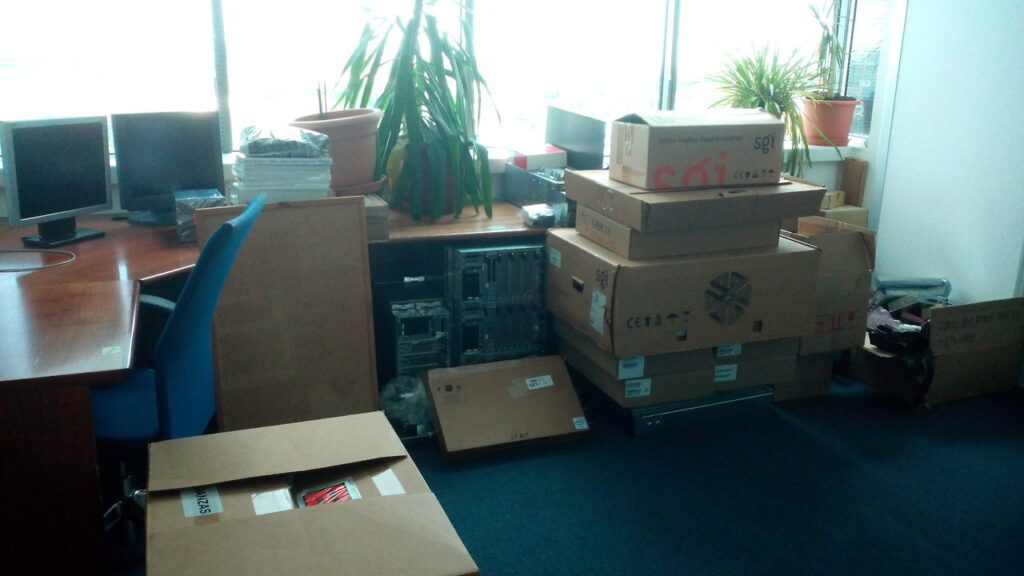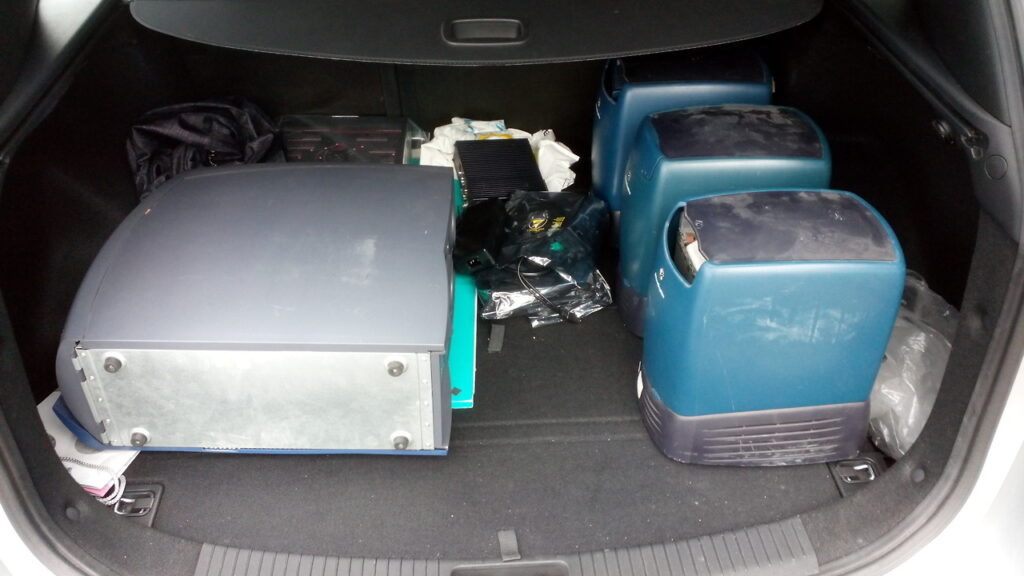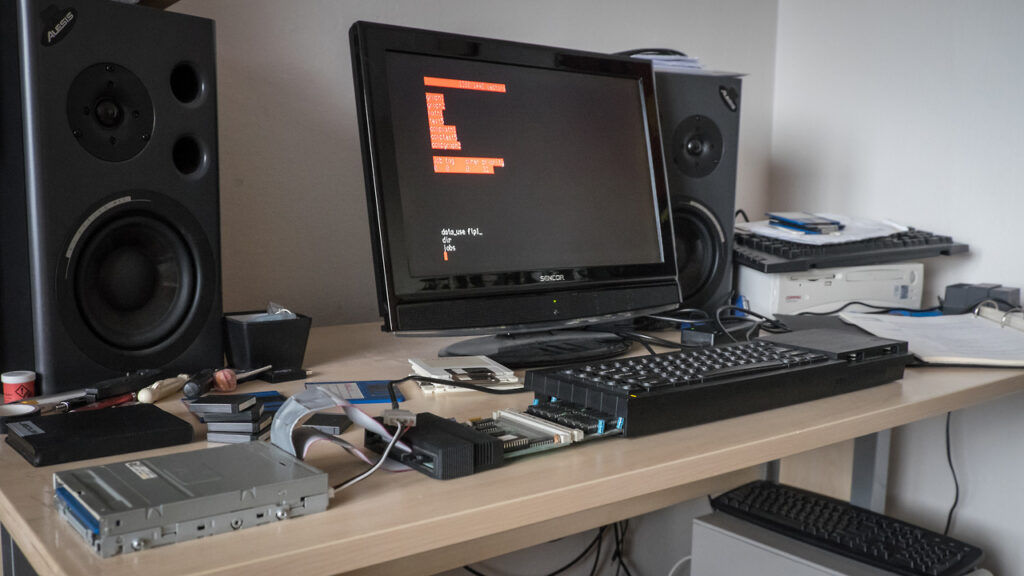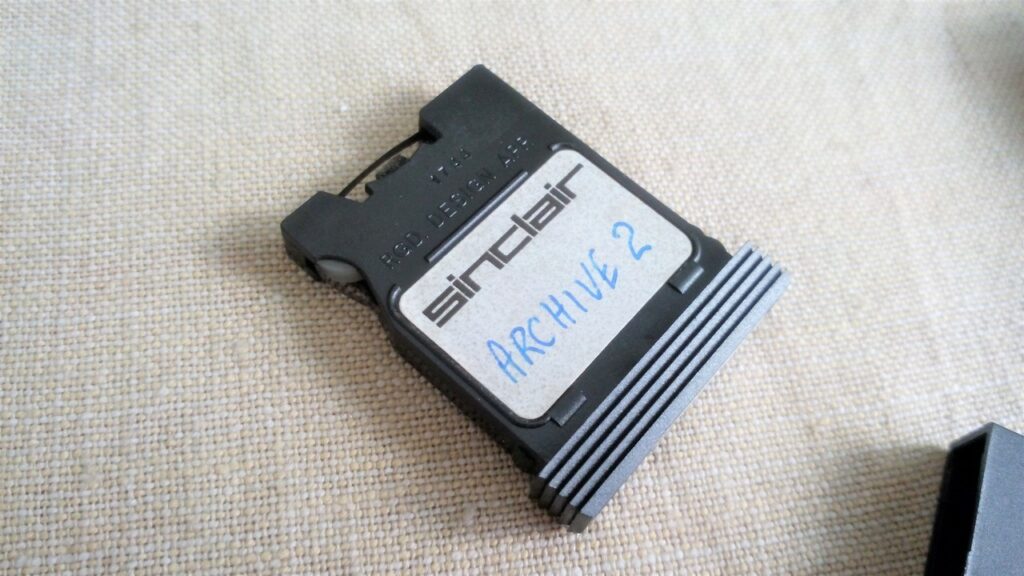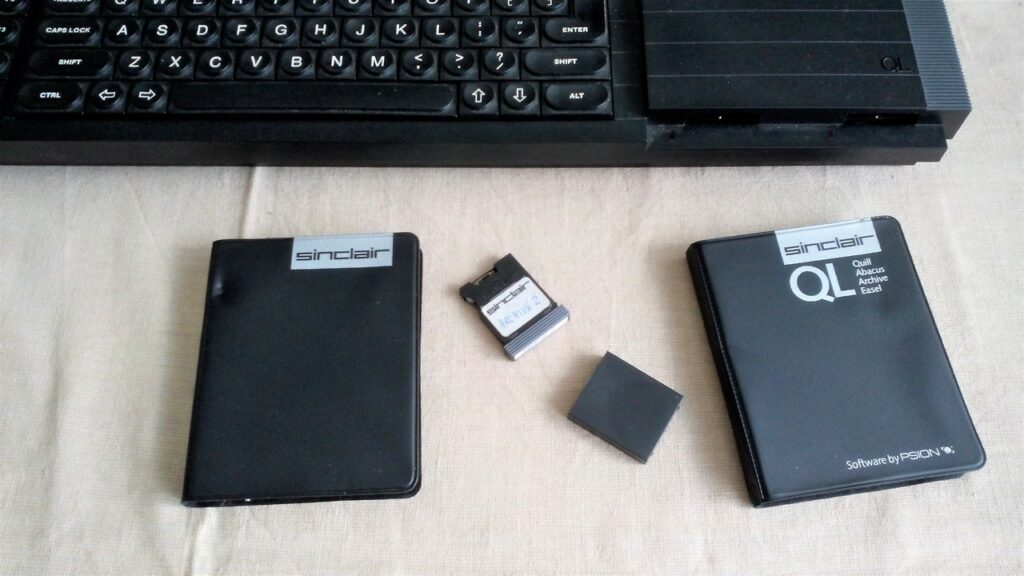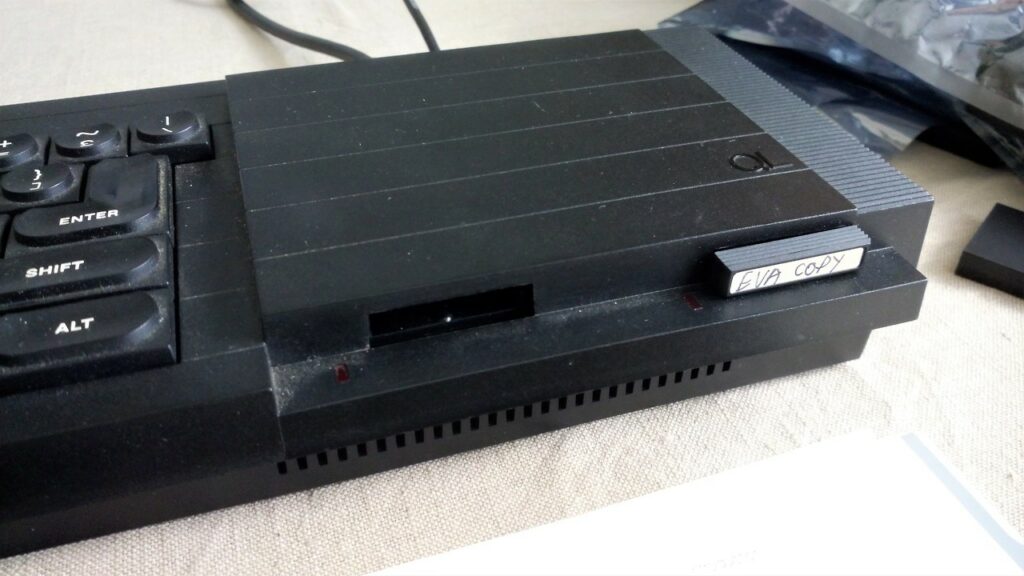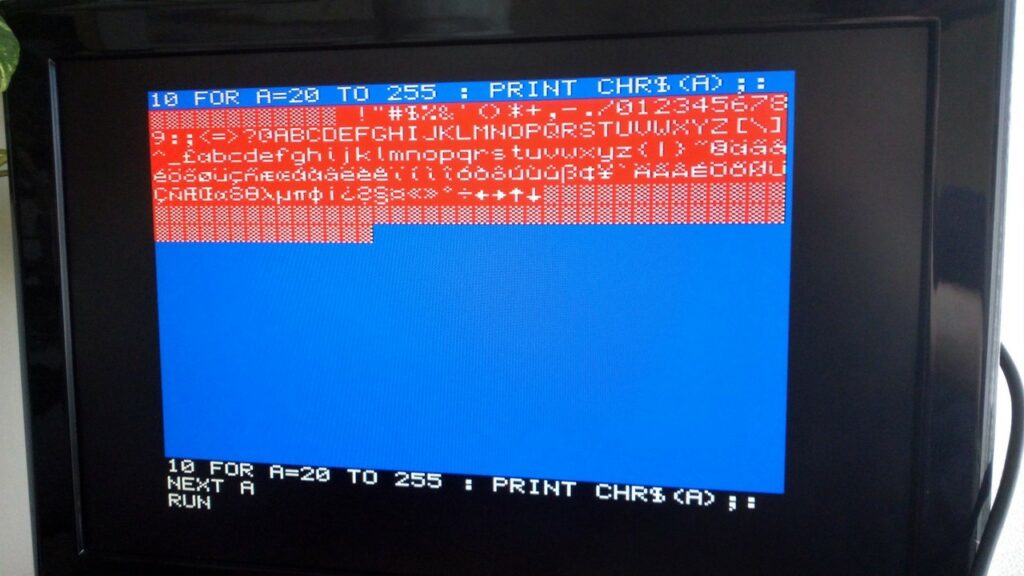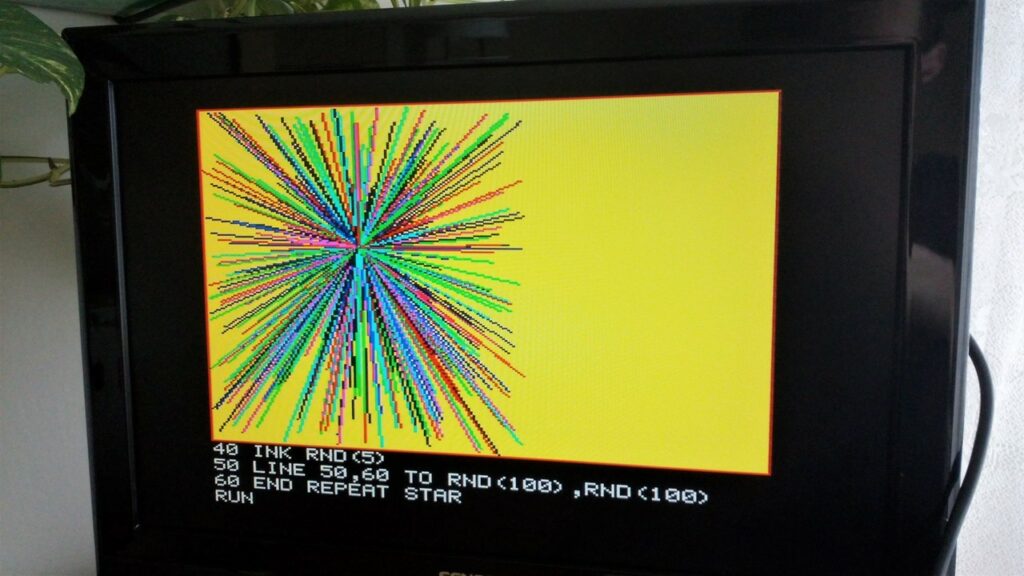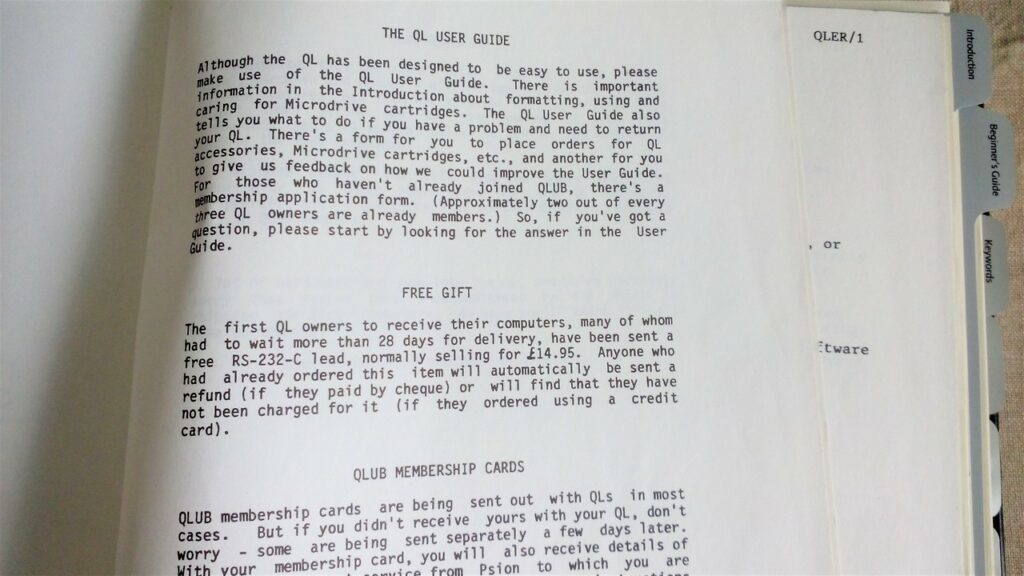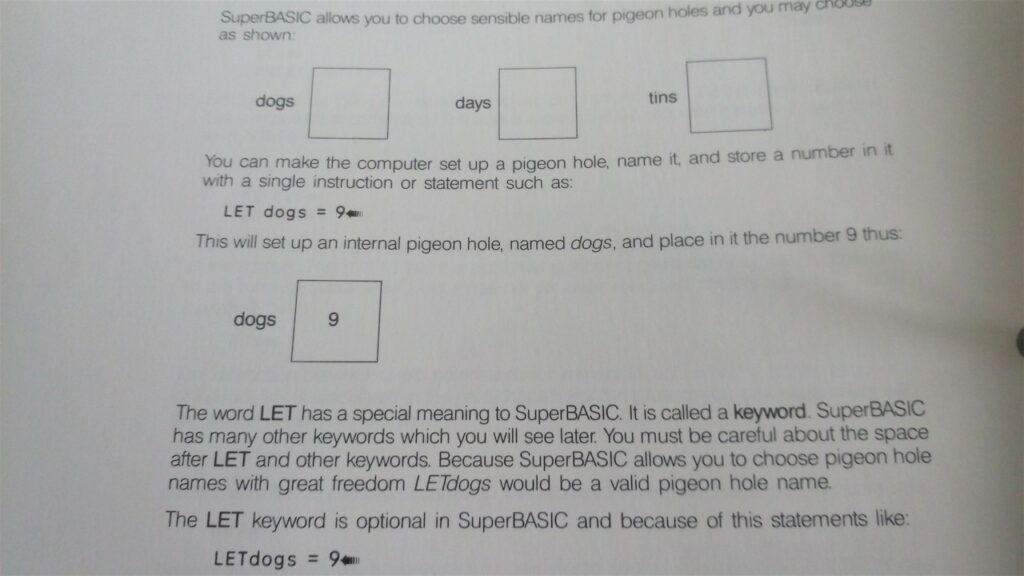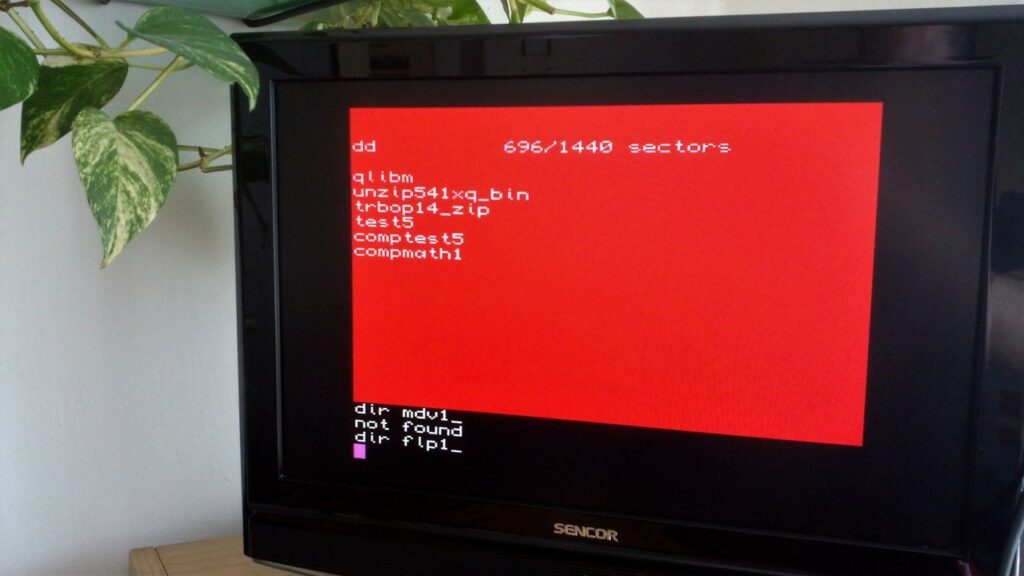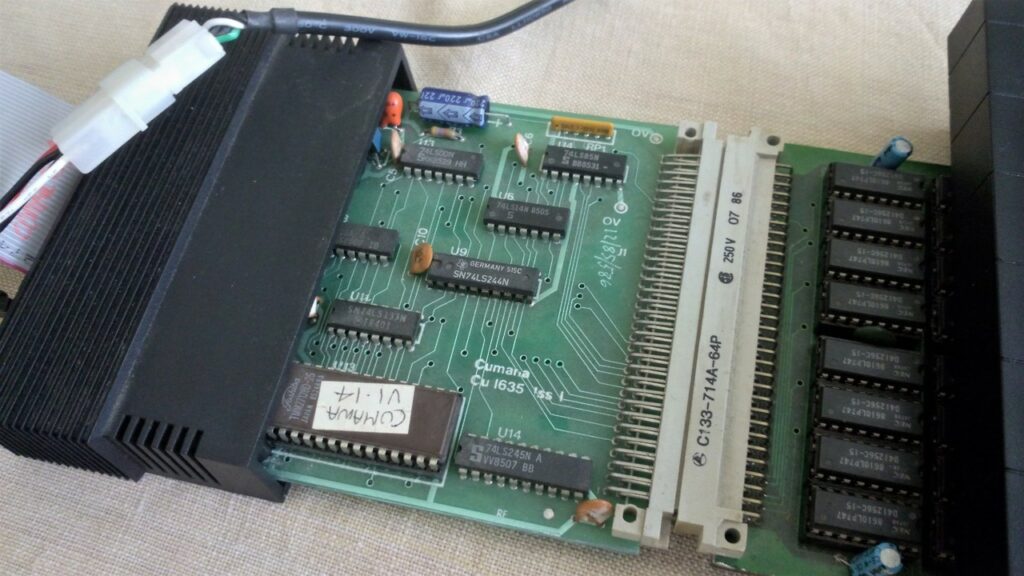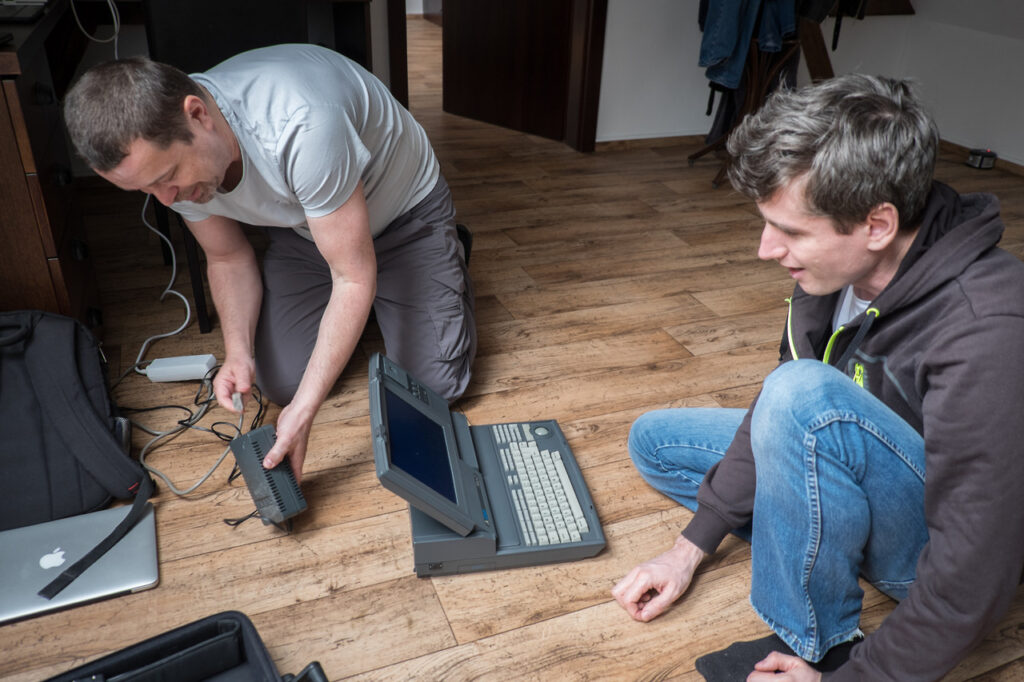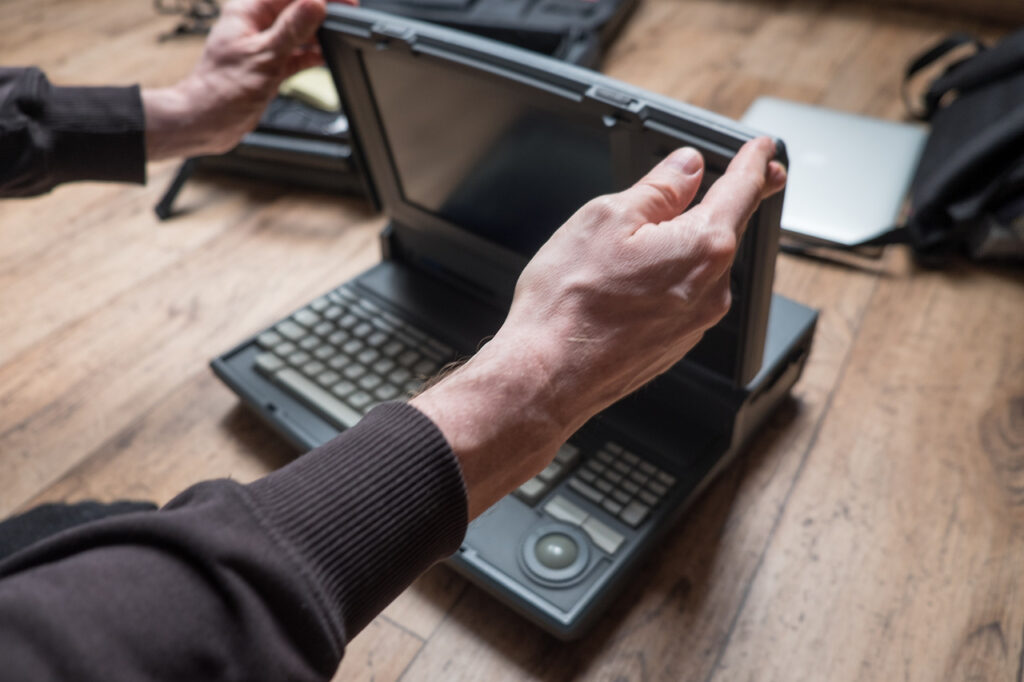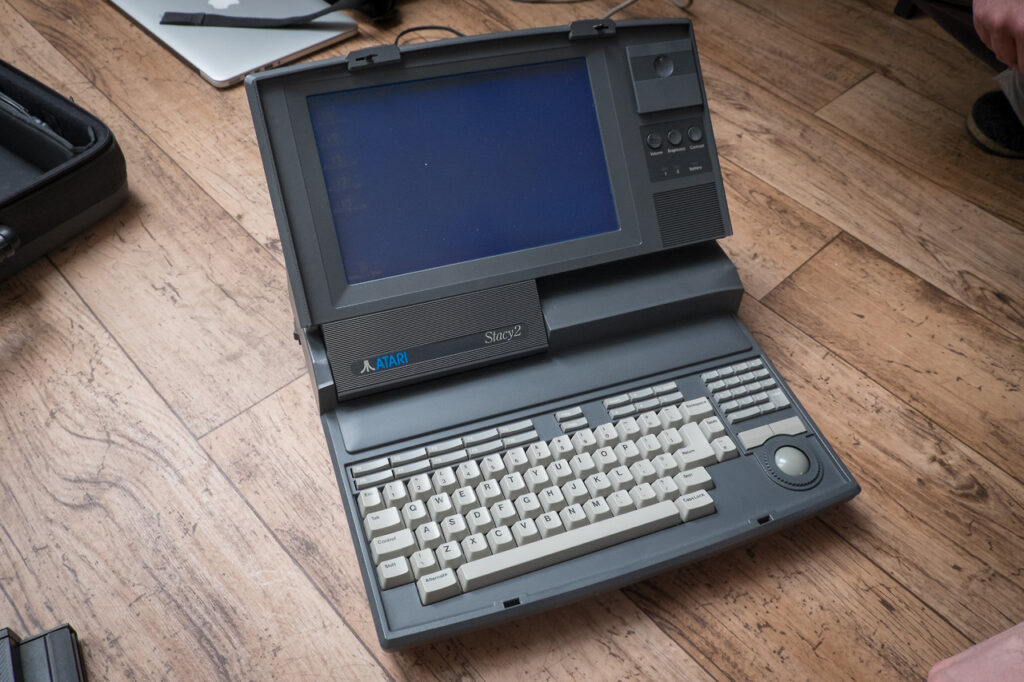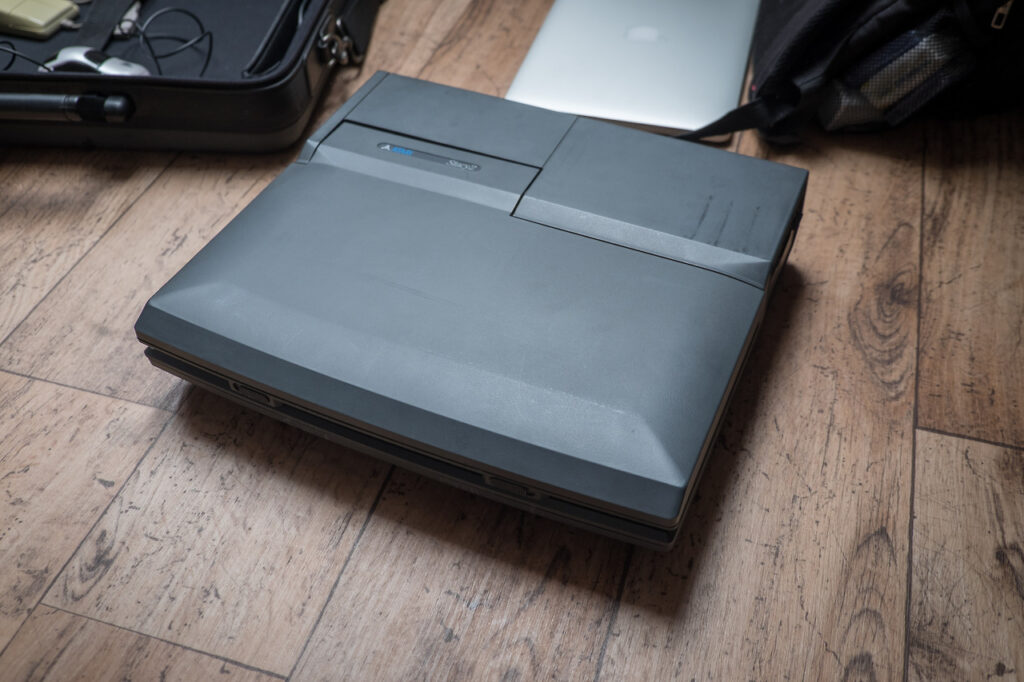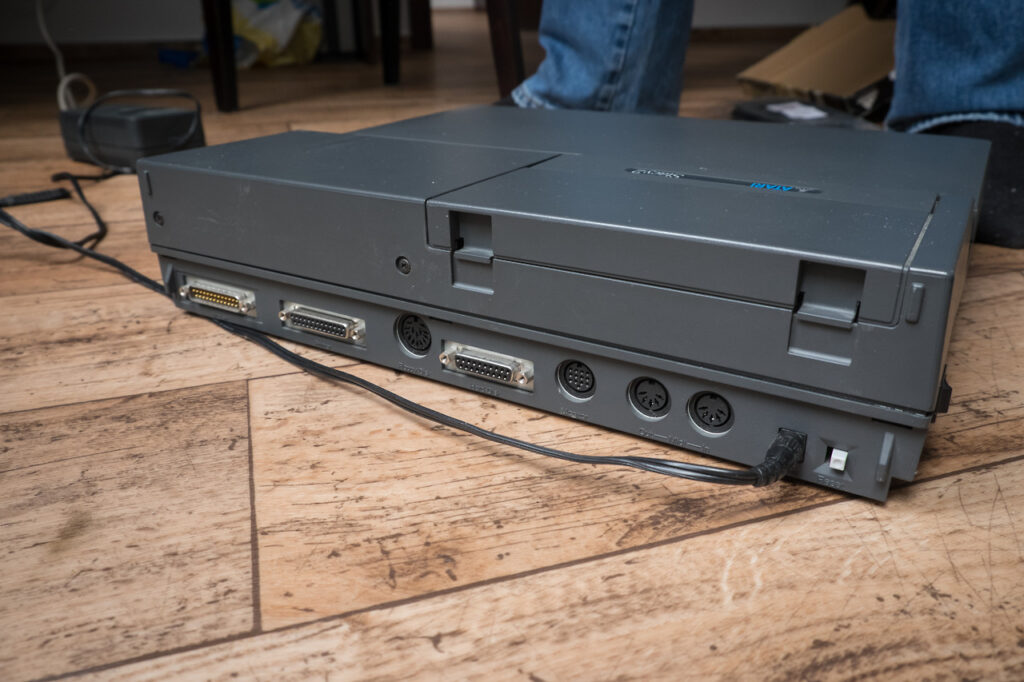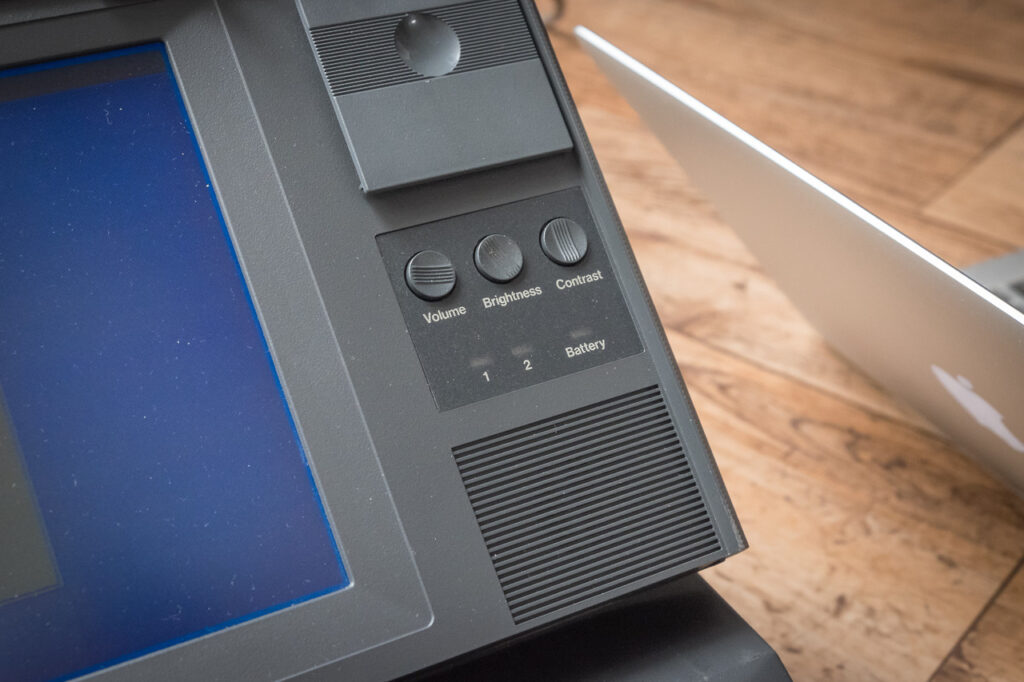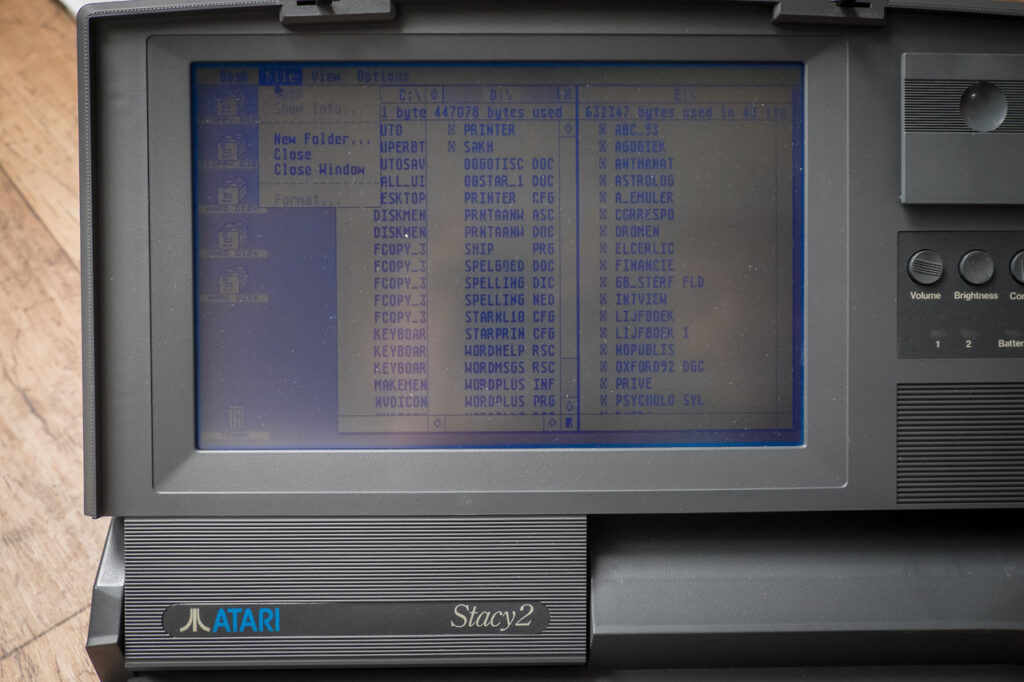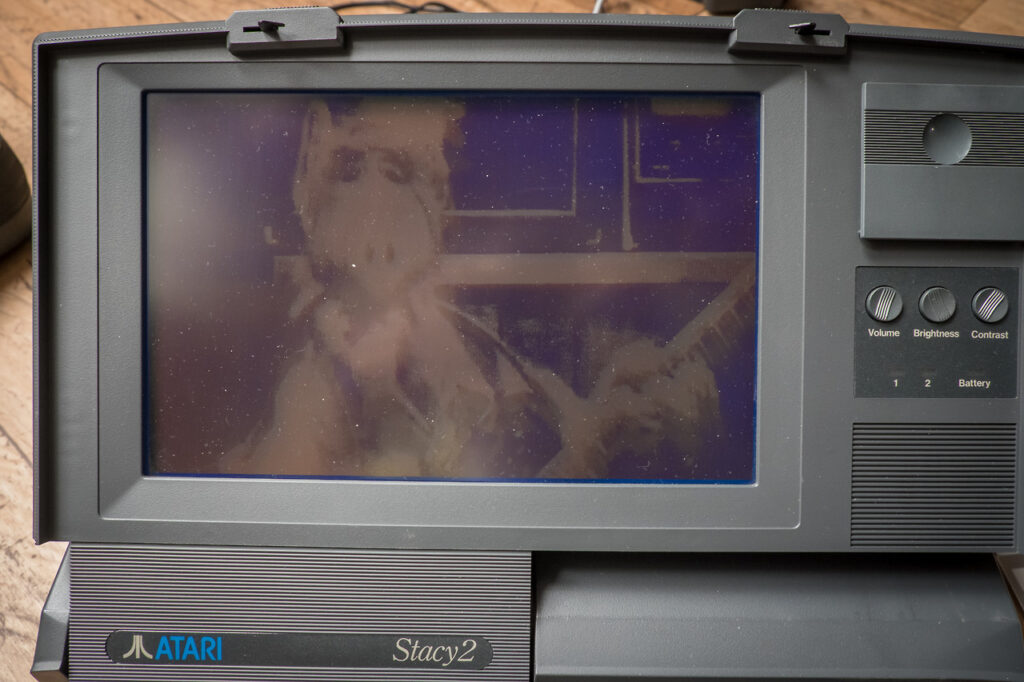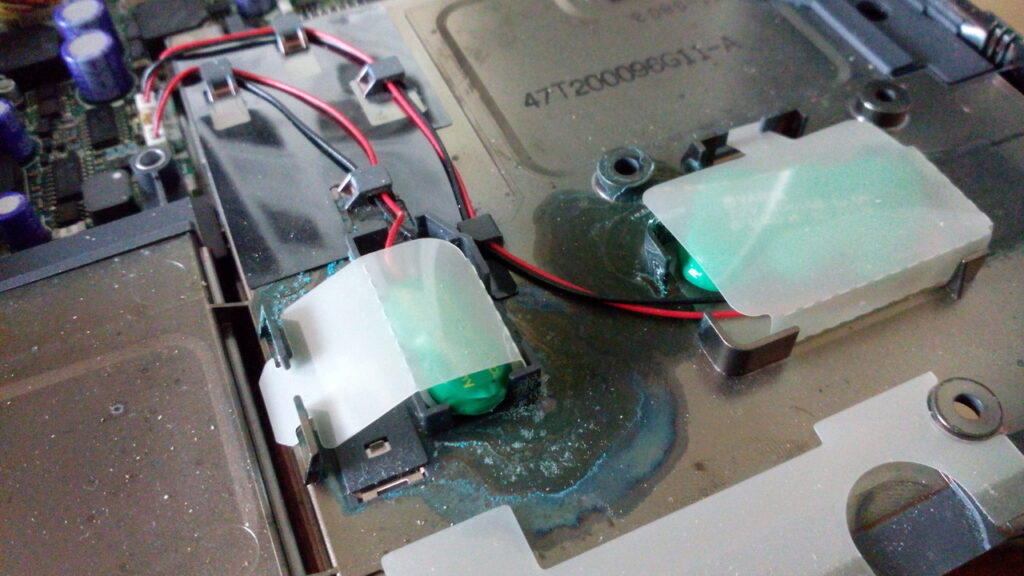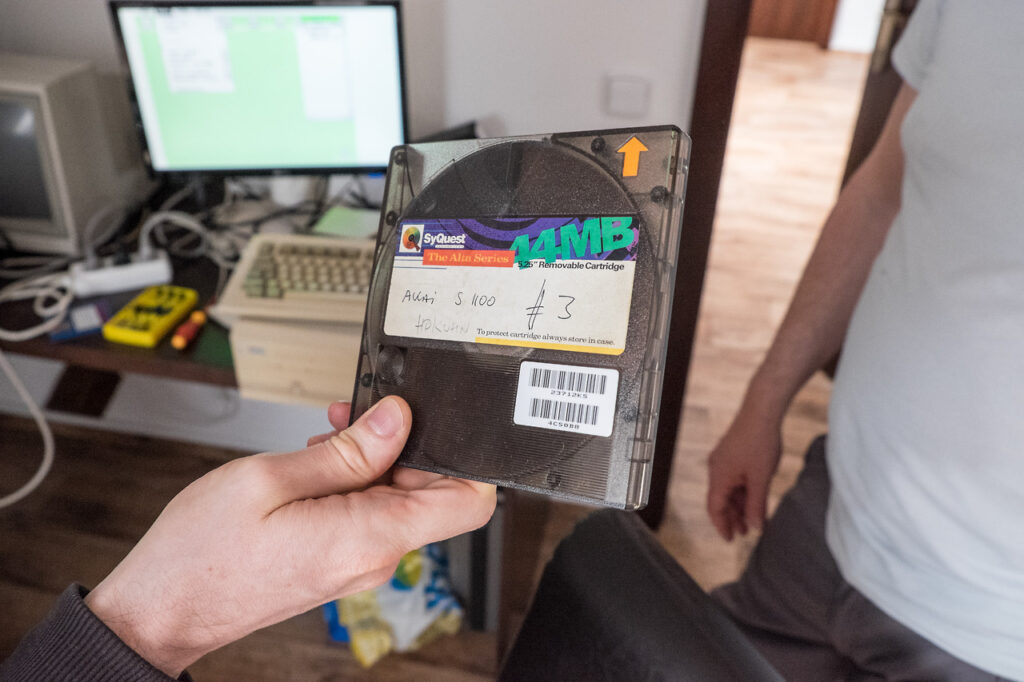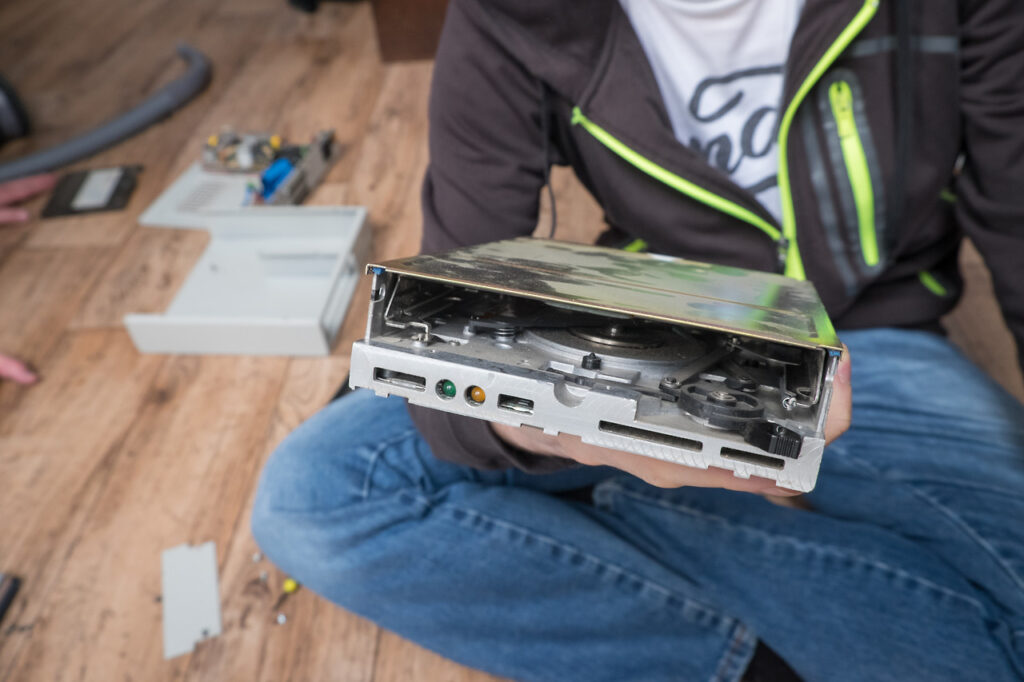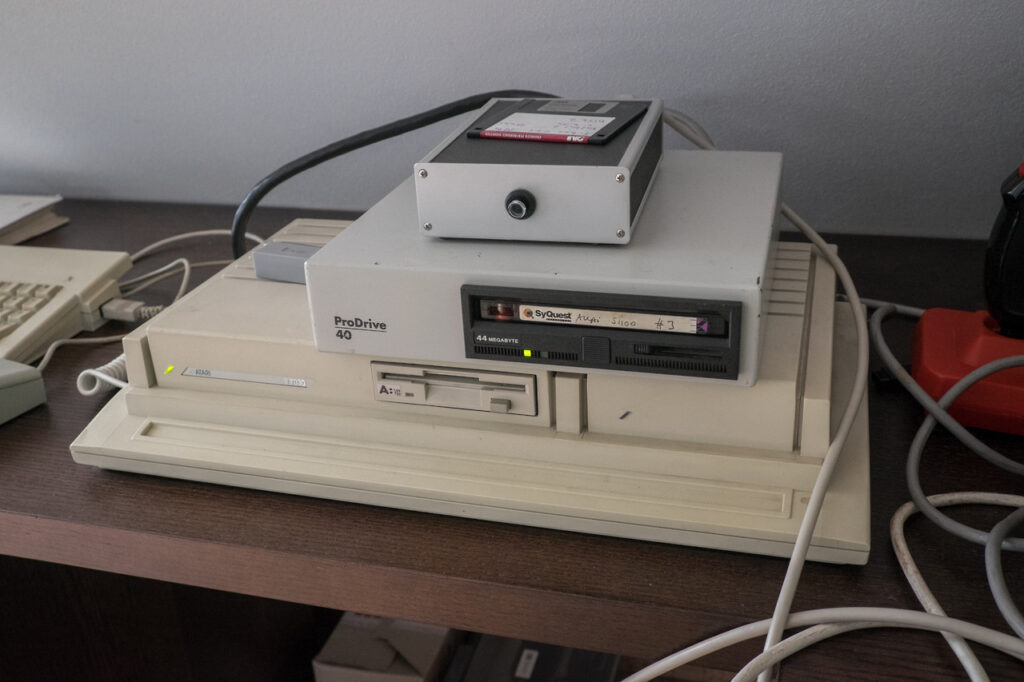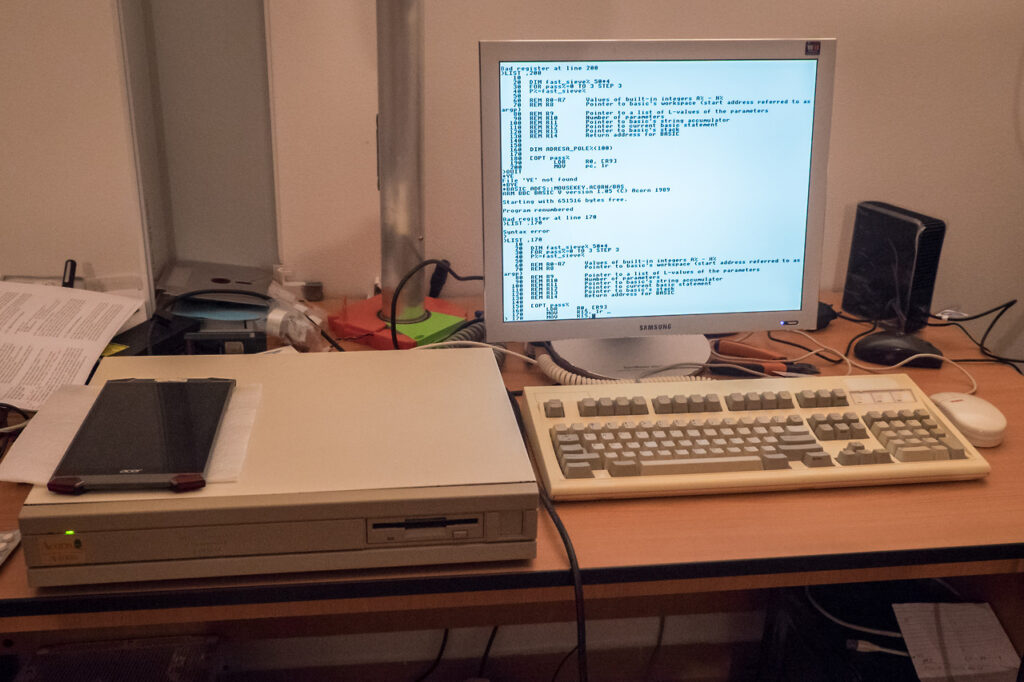Apple IIc As a Battery-Powered Portable Computer
Apple IIc was designed to be portable. That meant that the computer could be easily carried from work to home or anywhere else where you had a power socket and a composite screen (or TV). I knew about the LCD option offered by Apple but I didn’t know that there were complete kits to make the computer usable everywhere.
A true mobile user could enhance his Apple IIc with a passive-matrix non-backlit LCD (connected to the video port using a ribbon cable) and an external lead acid battery. There were also bags specially designed to carry all this stuff safely.
This option was not very successful, though. Not because of its weight around five kilograms – that was adequate by the standards of the era (there were people carrying Osbornes). The main problem was the LCD screen which could produce a good picture only under direct sun light. The contrast was extremely low and the screen was hardly readable in a dimly lit room. I’ve tried few different laptop LCD screens from the same generation and my eyes almost bled after 30 minutes of work.
Having three separate parts was also not very convenient for frequent travelers. The screen was not designed to cover the keyboard when the computer was being transported and you always had to attach the battery. The first generation of laptops started to appear at the same time. Although they were as heavy as this kit, they had all components in a single briefcase-like package. In 1985, you could buy Bondwell Model 2 (a cheaper CP/M laptop with 64kB of memory) or one of those PC compatible laptops which started to appear at the end of the year (like my Bondwell Model 8).
Image sources: imgur.com, popcorn.cx
